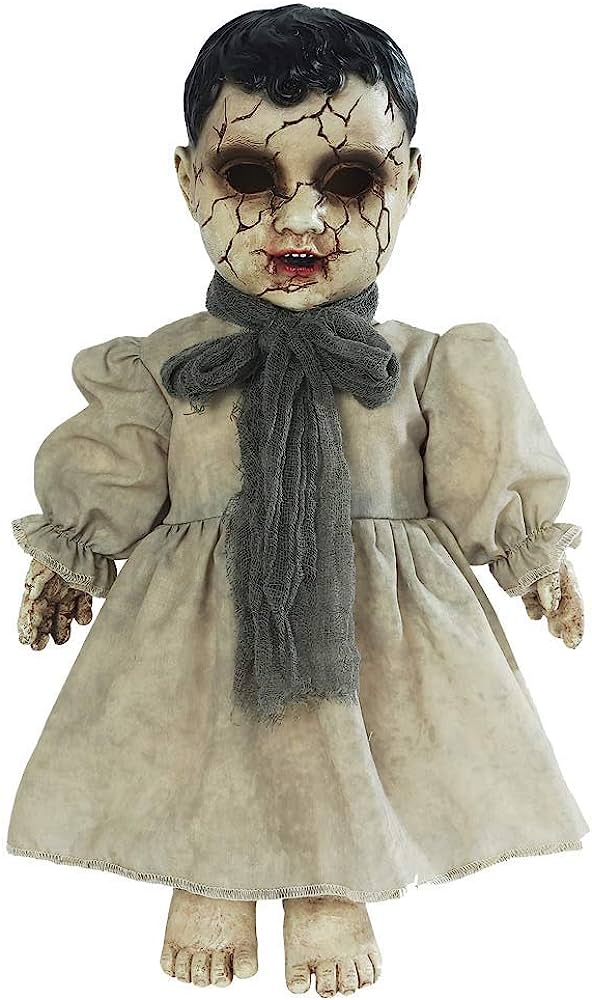Dolls have been around for centuries, and they have been a staple of children’s playtime. However, over time, dolls have evolved from innocent playthings to objects of fear and horror. Dolls are now associated with terror, and their popularity has exploded in recent years thanks to various horror films and TV shows. This essay aims to investigate the evolution of creepy dolls, detailing how they grew from beloved toys into nightmarish figures that terrorize our dreams.

The History of Dolls
Dolls have been found in archaeological digs dating back to ancient Egypt, Greece, and Rome. These were simple dolls made from materials such as clay, wood, and stone and were often used in religious ceremonies. In the Middle Ages, dolls were made from materials such as leather, wax, and bone, and they were still primarily used for religious purposes.
The Modern Doll
By the late 19th century, dolls had evolved into the toys we recognize today. Dolls were mass-produced, and they became more popular than ever before. Dolls were made from porcelain, bisque, and celluloid, and they were given more realistic expressions and features.
The Rise of Creepy Dolls
Despite their popularity, dolls have always had a slightly disturbing undertone. A child’s imagination can often turn a beloved toy into a source of terror. However, it wasn’t until the 20th century that dolls began to be portrayed as truly malevolent creatures. Dolls like Chucky from Child’s Play and Annabelle from The Conjuring became horror icons, and dolls as horror characters have only continued to grow in popularity.
Why Are Creepy Dolls So Scary?
There are several reasons why creepy dolls are so frightening. Dolls are often associated with innocence and childhood, making their transformation into something sinister all the more jarring. Dolls are also easily manipulated, and they can be used as puppets by those who control them. They can be given life by evil spirits or ghosts, which only adds to their creepy factor. Finally, dolls can have a somewhat uncanny appearance, which makes them seem off-putting and unsettling.
The Psychology of Creepy Dolls
The fear of dolls is known as pediophobia, and it is a specific phobia that can be linked to childhood experiences. For example, children may be afraid of dolls if they believe they have come to life at night or if they associate the doll with a traumatic experience. In some cases, it may stem from the uncanny appearance of dolls or the fear of being watched or controlled.
The Role of Creepy Dolls in Horror
Horror films have always used dolls as sources of fear, but in recent years, they have become some of the most popular horror villains. Characters like Chucky and Annabelle have become iconic horror figures. However, creepy dolls have also been used to explore deeper themes, such as the fear of losing control and the fear of the unknown. Creepy dolls have become shorthand for terror in horror films, and they are often used to create a sense of unease and discomfort in the viewer.
The Impact of Creepy Dolls on Popular Culture
Creepy dolls have had a significant impact on popular culture outside of horror films. They have become a source of inspiration in fashion, art, and even marketing. Dolls have been used as models for fashion shoots, and creepy dolls have been the subject of modern art installations. In marketing, dolls have been used to sell everything from cars to insurance, tapping into our fear of the unknown and our need for protection.
The Future of Creepy Dolls
As long as people continue to be afraid of dolls, the creepy doll will have a place in horror films and popular culture. However, it’s unlikely that dolls will disappear entirely from children’s playtime. Instead, they will continue to evolve with changing technology and cultural trends. The rise of smart dolls, which can interact with children and learn their preferences, may be the next frontier in doll technology. It remains to be seen how these advanced toys will be portrayed in media, but it’s safe to say that the fear of dolls will continue to be a part of our cultural consciousness.
Conclusion
Dolls have come a long way since their early days as religious objects. They have evolved from simple toys to detailed figures with realistic expressions, and they have become a source of horror and fear in contemporary culture. Creepy dolls have become an important part of horror films and popular culture, tapping into our fear of the unknown and our need for protection. Despite their unnerving reputation, dolls will continue to be an important part of children’s playtime and serve as objects of inspiration in art and fashion. The creepy doll may be the stuff of nightmares, but it is also a powerful cultural symbol that will continue to captivate and terrify audiences for years to come.